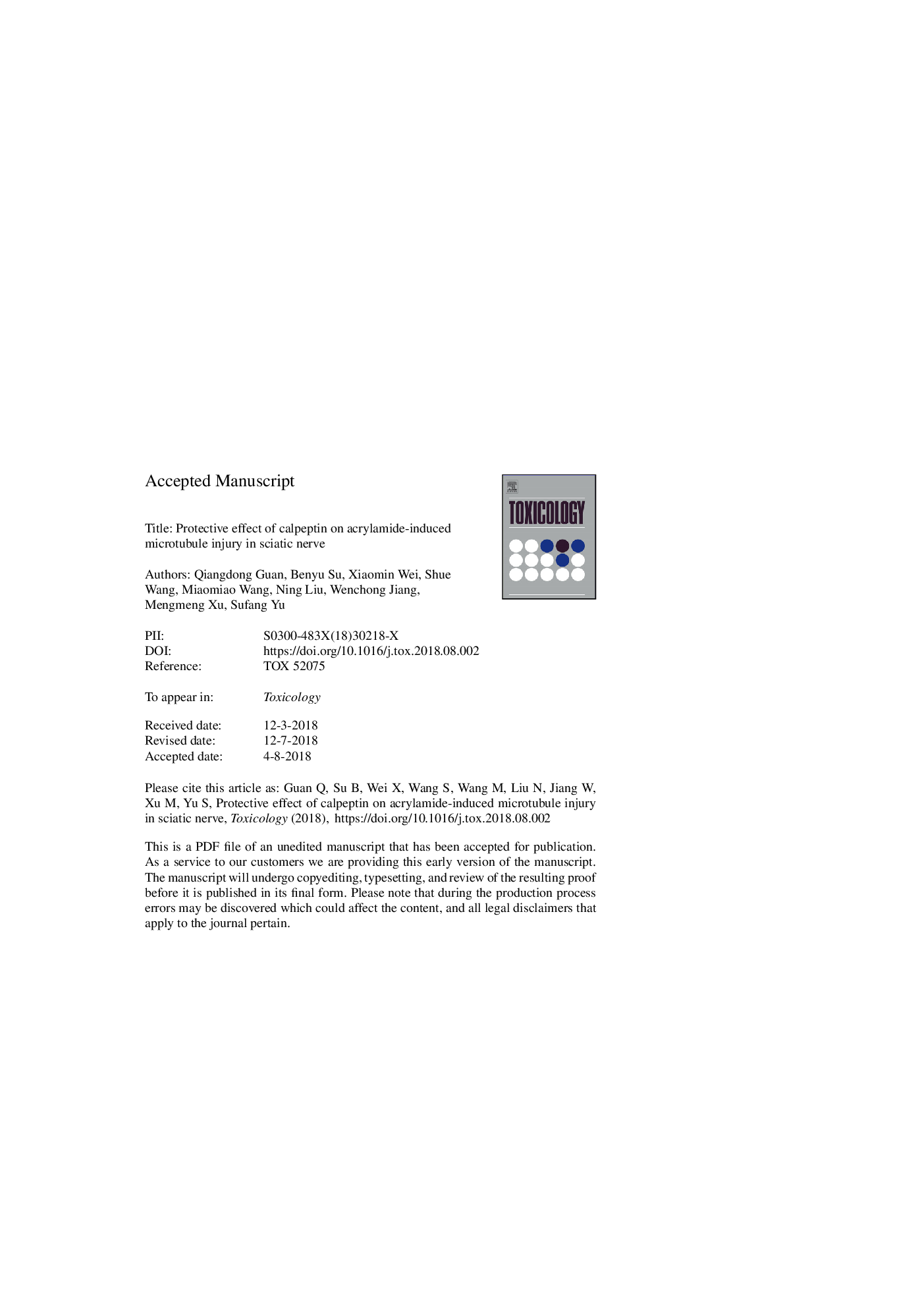| Article ID | Journal | Published Year | Pages | File Type |
|---|---|---|---|---|
| 8552703 | Toxicology | 2018 | 35 Pages |
Abstract
The present study aimed to investigate the protective effect and mechanism of calpeptin (CP) on acrylamide (ACR)-induced microtubule (MT) injury in the sciatic nerve of rats. All rats were divided into four groups (control, CP, ACR, and ACRâ+âCP):1âml/kg saline, 200âμg/kg CP, 30âmg/kg ACR, and 30âmg/kg ACR plus 200âμg/kg CP were administered to the corresponding rats for 4 weeks through intraperitoneal injection. Body weight and neurobehavioral indicators were measured weekly and α-tubulin, β-tubulin, and other concerned proteins were estimated by western blotting and immunohistochemistry. At 4 weeks, decreased body weight, increased gait scores, increased hindlimb splay, and decreased time of fall of ACR rats were observed compared with those of control rats. All these mentioned changes were restored in the ACRâ+âCP group compared with the ACR group. After 4 weeks of administration, western blotting and immunohistochemistry revealed significant increase in the protein levels of β-tubulin, calpain I, calpain II, Tau, microtubule-associated protein 2 (MAP2), protein kinase C, and cyclin-dependent kinase 5 in the ACR group compared with the control group; these increases were significantly lower in the ACRâ+âCP group than in the ACR group. Furthermore, histopathological examination revealed loose arrangement, disorganised structure, uneven density, and exfoliated perineurium in the ACR group, and CP administration improved these changes significantly. The present results suggest that CP has an intervening effect on ACR-induced MT injury. A possible mechanism is that calpain maintains the stability of MTs by regulating the metabolism of Tau and MAP2.
Related Topics
Life Sciences
Environmental Science
Health, Toxicology and Mutagenesis
Authors
Qiangdong Guan, Benyu Su, Xiaomin Wei, Shue Wang, Miaomiao Wang, Ning Liu, Wenchong Jiang, Mengmeng Xu, Sufang Yu,
